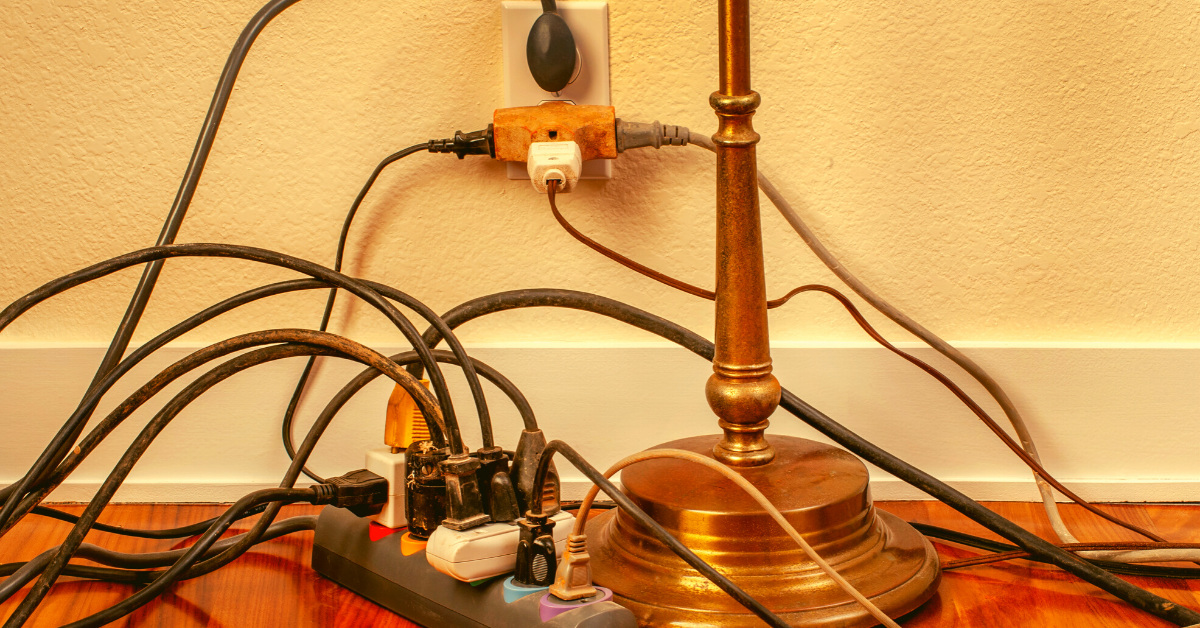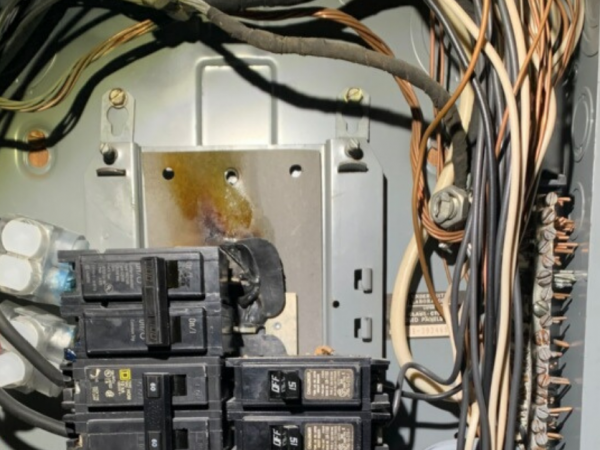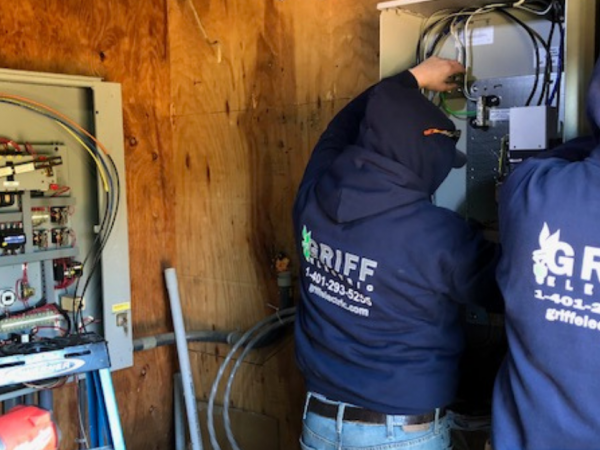
If locating your fuse box is about the extent of your electrical expertise as a homeowner, you’re not alone. Your home’s electrical system is complicated and configured with great precision, but you don’t have to understand its nuances to identify warning signs of an overloaded electrical circuit. Read on for signs that there may be a problem.
What is an overloaded electrical circuit, and why does it matter?
An overloaded circuit is one of several electrical risks in the home. Each circuit is equipped to safely handle a certain amount of electricity.
When that load is exceeded and you try to use more electricity than a circuit is designed for, you’re overloading it. It’s not only at capacity for what it can handle but it’s gone over the limit. This is a fire and safety risk, which is what makes recognizing it so important.
Overloaded circuits are a common issue. We see them often here in Newport County because older homes in the area just weren’t built to handle all of the electronics we’re used to in our day-to-day (more on that here).
When a circuit overload happens, the power to that circuit should automatically shut off, which is what’s going on when a breaker trips. This can feel frustrating when it happens and, say, your hairdryer or other electronics shut off mid-use. But it’s a safety measure that exists to stop the electrical flow when danger is present.
Here are the top three ways to recognize an overloaded circuit.
Now that you know what an overloaded circuit is and why it needs attention, let’s go over the main ways to look out for one. According to the Electrical Safety Foundation International (ESFI) and based on our professional experience, here are some of the most common indicators:
- Breakers that Keep Tripping — If the electricity continually cuts out in a certain room or part of a room, an overloaded circuit is likely to blame. Make sure you’re not overextending your electrical outlet with extension cords or too many appliances. Call an electrician if the problem persists.
- Warm, Hot, or Discolored Outlet Covers — The outlet covers, or wall plates, that protect your outlets are built to withstand heat and protect you from the electrical wires within. Signs of warmth or discoloration on the outlet covers are definite warning signs of an overloaded circuit and excessive electrical current. Have it looked at immediately by an electrician.
- Flickering or Dimming Lights — If your lights tend to flicker, dim, or even blink in certain areas of the house, it could be an overloaded circuit causing the issue. Your lights may not be getting enough electricity if there’s high usage in other areas of the home, so have a professional determine what’s happening.
If you notice any or all of these warnings, reach out to a licensed electrician before a major problem arises. Configuring electrical systems and correcting issues is something our crew does every day. With these warning signs in mind, be proactive about your home’s electrical health. It’s a great way to protect both safety and peace of mind.



